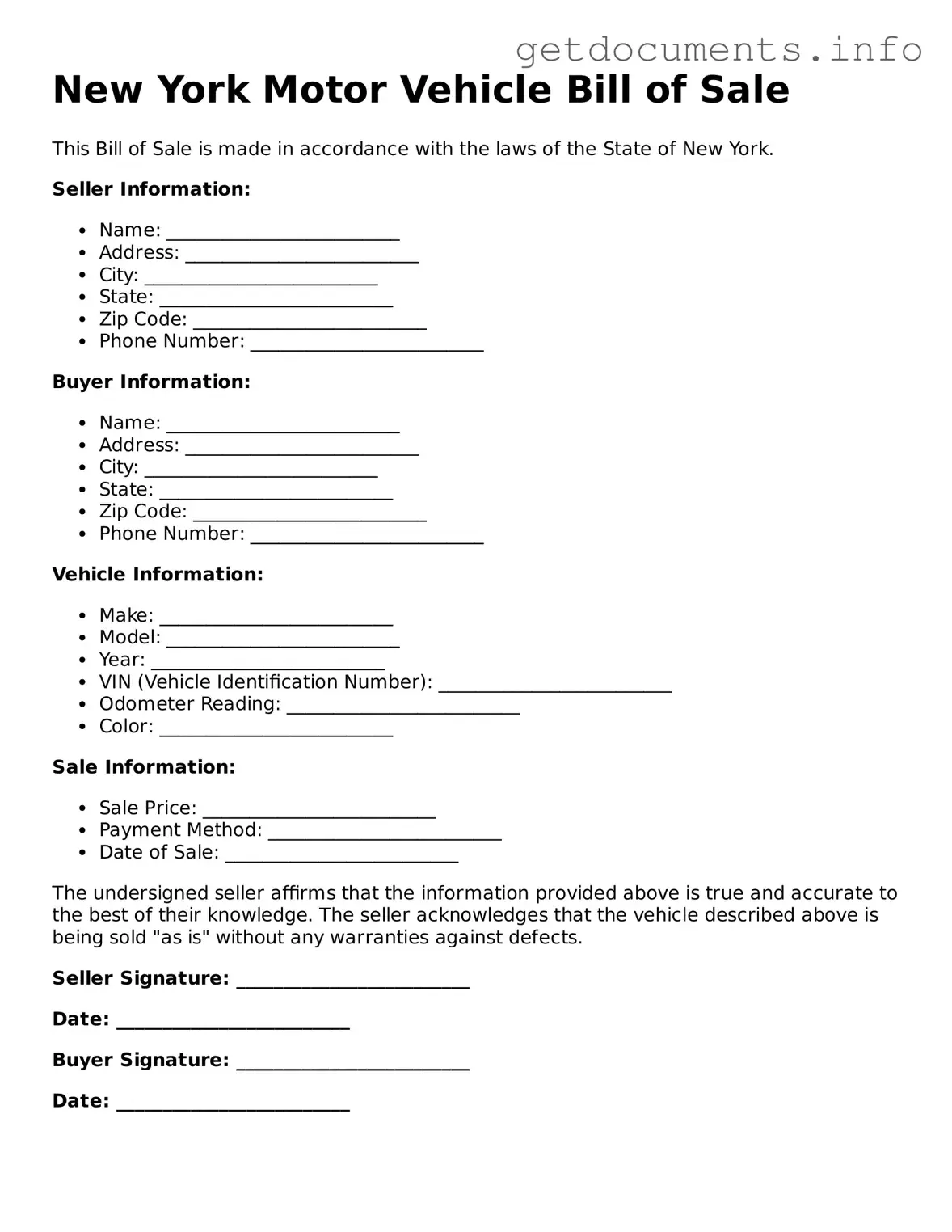The New York Motor Vehicle Bill of Sale form serves as a crucial document in the process of transferring ownership of a vehicle from one party to another. This form captures essential details, including the names and addresses of both the seller and buyer, the vehicle's identification number (VIN), make, model, year, and odometer reading at the time of sale. It also outlines the purchase price and specifies whether the transaction involves any warranties or is sold "as-is." By providing a clear record of the sale, this form helps protect both parties by documenting the terms of the agreement. Additionally, it plays a vital role in the registration process, as it is often required by the Department of Motor Vehicles (DMV) when the new owner seeks to register the vehicle in their name. Understanding the components and implications of the Motor Vehicle Bill of Sale form is essential for anyone engaged in the buying or selling of a vehicle in New York, ensuring that the transaction is conducted smoothly and legally.
